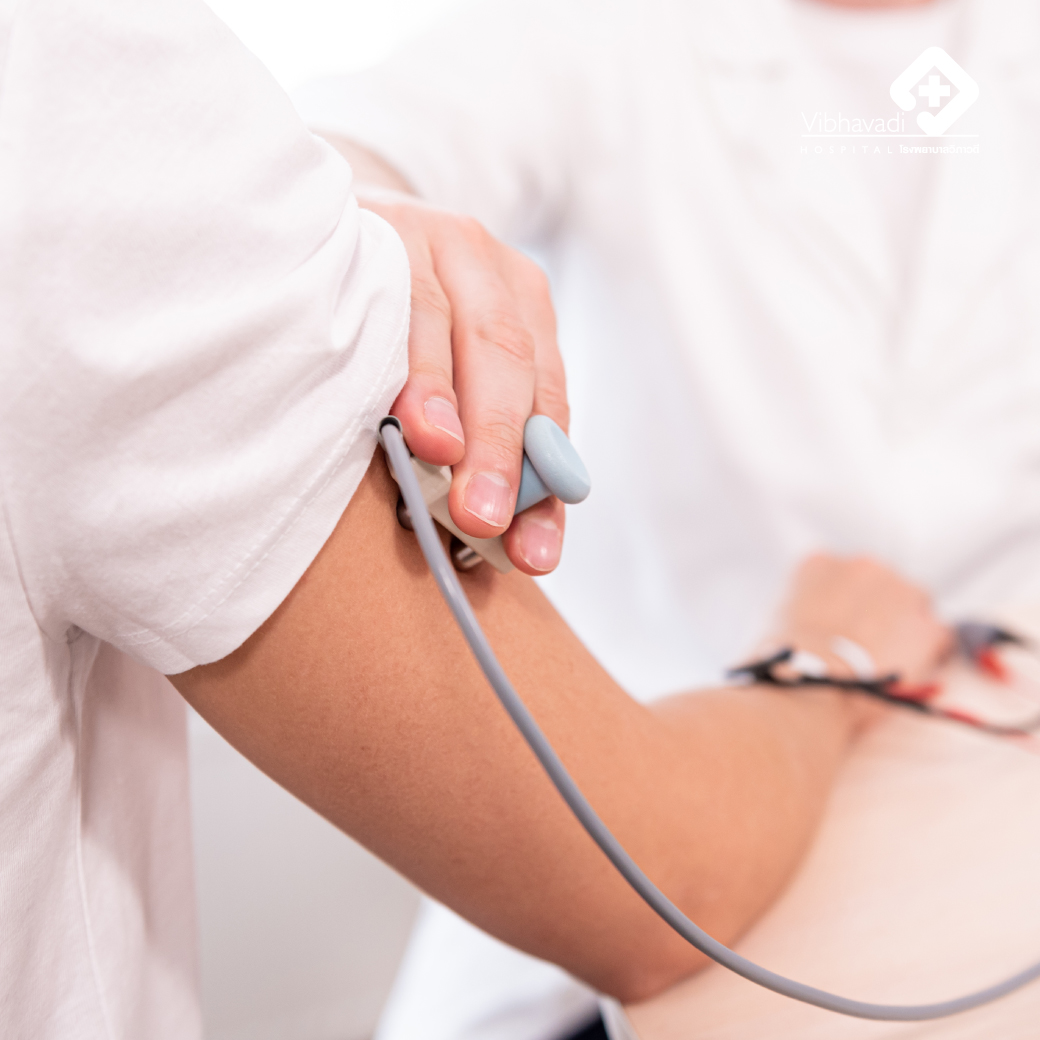Electromyography (EMG)
Electromyography (EMG) is an electrodiagnostic procedure used to measure the health and response of muscles and nerves. This procedure can detect dysfunction of the nerves, allowing physicians to provide the correct and accurate treatment for patients who are suffering from symptoms such as numb hands and feet, and muscle weakness.
What is EMG and how does it work?
EMG relies on our understanding of the electrical impulses present in motor neurons, for diagnosis purposes. Generally, there are 3 types of tests available:
1. Nerve conduction study
A diagnostic procedure using weak and safe electrical impulses to stimulate different nerves in the body. It can detect abnormalities and dysfunction, which may be present in patients with diabetes neuropathy, or pinched nerve in the wrists and elbows.
2. Needle Electromyographic Study
A diagnostic procedure using small needles to detect abnormalities in the muscles and nerves, resulting from pinched nerves in the neck and back area. It can also be used to detect nerve damage and neuromuscular abnormalities.
3. Evoked Potentials (Eps)
A diagnostic procedure using sensory stimulation such as electricity, light, touch, and sound to stimulate activity in the brain, which signals will then travel through the nerves and allow for any abnormalities to be detected.
Benefits of the aforementioned tests
EMG tests are beneficial for the accurate diagnosis of neuromuscular diseases and disorders, furthermore it can be a very useful tool for treatment planning.
How safe is the test?
EMG tests are considered safe, in both children and adults. Patients undergoing the test may feel mild electric shocks or slight pain in procedures involving intramuscular needles.
Potential risks and side effects
- Soreness in areas tested using needles, however the discomfort should go away in a few days.
- Though rare and manageable, iatrogenic pneumothorax can be a possible complication of tests involving superficial muscular needles in the chest area. Symptoms include chest tightness, pain, and shortness of breath.
Inform your physician prior to scheduling a test if you:
- Have a history of bleeding disorders such as hemophilia, or are taking medication that can cause bleeding (for EMG tests that require needles)
- Have a pacemaker implanted
- Have skin inflammation or infection at the site of test
Note:
- Patients who are taking Mestinon (for Myasthenia gravis) must stop taking the medication 1 day prior to testing
- No fasting necessary
For more information please contact Rehabilitation Center, Vibhavadi Hospital
Tel: 02-561-1111 ext. 1118-9




